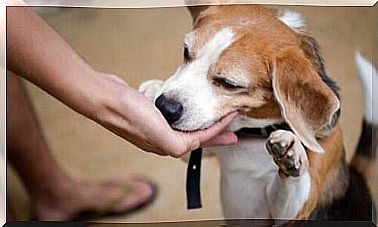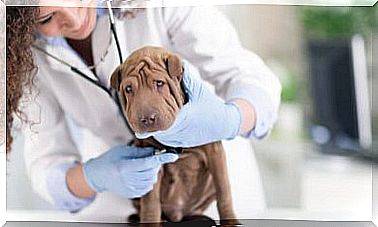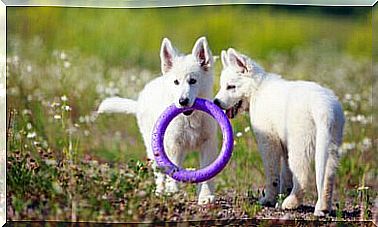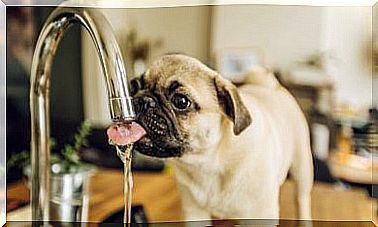Gingivitis In Dogs: Symptoms And Treatment
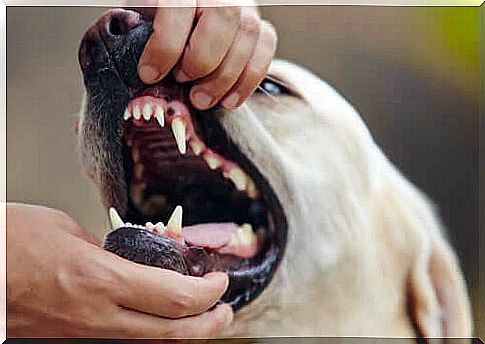
The gingivitis in dogs is a very common oral diseases. It is a progressive inflammatory disorder that affects the gums and can spread to the bone.
In this article we talk about the symptoms and how to treat gingivitis in dogs, as well as give you some tips on how to prevent it.
How does gingivitis develop in your dog?
Most oral diseases develop from the formation of bacterial plaques, and so it works for gingivitis as well. In general, this inflammatory disorder begins with poor treatment of the tartar on your dog’s teeth. But let’s try to better understand why gingivitis appears in order to better understand its symptoms and treatments.
Several species of bacteria live in the dog’s mouth. When we don’t brush his teeth, we encourage food scraps to accumulate between his teeth and gums. These organic residues act as food for the bacteria found in the animal’s mouth, which can thus proliferate.
In this way, an overpopulation of bacteria is produced in the animal’s mouth; bacteria that collect in agglomerates that form, in fact, the plaque. Bacterial plaque adheres to the teeth and forms tartar when it comes into contact with enamel and saliva.
In the layer that forms between tartar and tooth, bacteria continue to proliferate which, if not fought in time, penetrate the gums. This is when the inflammation of the gums known as gingivitis occurs.
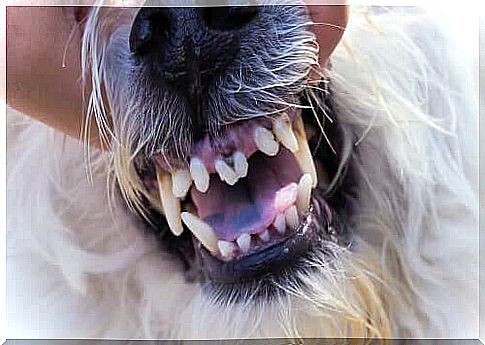
Symptoms of gingivitis in dogs
Gingivitis in dogs often and willingly develops quietly. The first symptoms are difficult to diagnose at first sight in the animal. For this reason it is advisable to regularly check your pet’s mouth to monitor any changes.
The first obvious sign of gingivitis in dogs is the appearance of a thin red line in the tooth-gum line. At the same time, the gums may become red and swollen. In cases of advanced gingivitis, abscesses and blood loss can occur.
But gingivitis can be accompanied by a number of more complex symptoms, especially if not treated the right way. Here are some of them:
- Halitosis.
- Difficulty in chewing.
- Loss of appetite.
- Excessive salivation.
- Attempt to scratch the mouth area frequently.
- Gingival hyperplasia (enlarged gums).
- The dog does not allow itself to be touched on the mouth or reacts aggressively if someone tries to do so.
- Altered behavior, usually associated with pain caused by inflammation.
When gingivitis in dogs is not treated in time, the bacteria continue to advance at the risk of penetrating the muscle and bone tissues, which serve as sustenance for the teeth. In this case, the clinical picture becomes complex and we speak of periodontitis or periodontal disease, which can even lead to the loss of dental material.
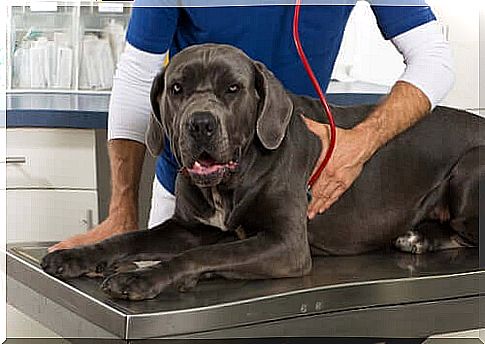
Treating gingivitis in dogs
When you notice any alteration in the mouth of your four-legged friend, take him immediately to a veterinary office, where a professional can examine the animal’s mouth and carry out all the necessary clinical analyzes to ascertain the state of health and the bacterial progress in the ‘body.
Treatment for gingivitis in dogs will fundamentally depend on the stage of development of the disease. Since it is a bacterial infection, the use of antibiotics is often essential.
In milder cases, the antibiotic is usually applied locally to relieve the inflammatory process and eliminate bacteria. In more advanced cases, however, the antibiotic can be taken orally or intravenously, depending on the degree of proliferation of the bacteria in the body.
In addition, the veterinarian may possibly use analgesics to relieve pain and thus improve the quality of life of your dog during the period of illness.
Once the inflammation has resolved, in some cases, surgery can also be used to remove the tartar left between the teeth. In this way, the production of a new gingival inflammation is avoided. Before proceeding with this operation, the veterinary staff will always check the health of the animal.
In the event that the bacteria are able to reach the bone tissues, the veterinarian will have to understand if the dental structure has been affected. In case of advanced deterioration, it may be necessary to extract the affected part of the tooth through surgery.


